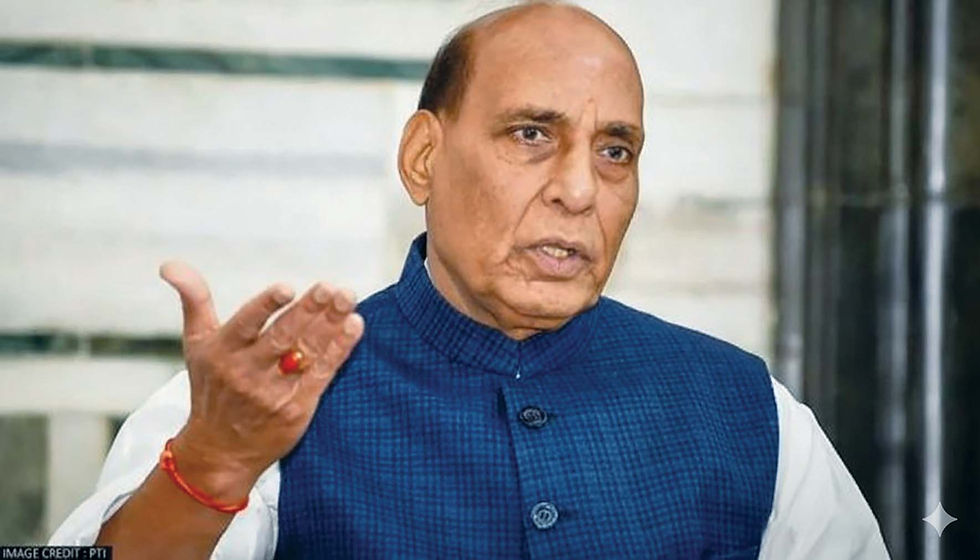Why Maharashtra Needs a Special Public Safety Act
- Praveen Dixit

- Mar 18
- 4 min read
Updated: Mar 20
When extremism moves from the jungle to the city, the laws of engagement must evolve too.

On 12 September 2004, two Maoist groups - the Maoist Communist Centre and the CPI (ML) (People’s War) - merged to form the Communist Party of India (Maoist). In the decades since, the movement, once confined to the dense forests of central and eastern India, has found a new battleground: the cities.
There are different opinions about the term ‘Urban Naxal.’ But to dispel misconceptions about this phenomenon, it is necessary to study Maoist literature. The Maoist ideology, long sustained by rural guerrilla tactics, has adapted to urban landscapes, where it exploits democratic freedoms to undermine the very foundation of the Indian state. This is not a matter of academic debate but a pressing national security concern. Maharashtra, a state with a deep history of left-wing extremism, now faces an urgent need for legislative action. The proposed Maharashtra Special Public Safety Act seeks to address this evolving threat, not by stifling dissent but by preventing insidious efforts to dismantle democracy from within.
To understand the gravity of the situation, one must look beyond rhetoric and into the strategic doctrine of Maoist insurgency. The CPI (Maoist) outlines its urban strategy in Strategy and Tactics of the Indian Revolution, a manifesto that has been seized repeatedly during counterinsurgency operations. This document describes a three-pronged approach: the party, the army and the united front. The last of these - the united front - is the most potent weapon in the urban theater. It operates through student groups, labour unions, cultural organizations and civil rights collectives, all ostensibly legitimate but serving a deeper revolutionary cause. Their goal is to erode faith in constitutional democracy, creating conditions ripe for armed struggle.
Unlike the jungle warfare of the past, urban Maoism functions in subtler, more insidious ways. It recruits students, the unemployed, the disenfranchised and even professionals into its ideological fold. It infiltrates legitimate protests, converting them into flashpoints of radicalization. It spreads anti-state narratives through art, theater and academia. The Maoist cultural front, epitomized by banned groups like the Chetna Natya Manch (CNM) uses songs and plays to indoctrinate youth, as documented in multiple intelligence reports. Former Maoist cadres like Milind Teltumbde, who began as a labour union leader in Maharashtra’s coal belt, exemplify this trajectory from activism to insurgency.
India has stringent anti-terror laws, including the Unlawful Activities (Prevention) Act (UAPA). Yet, these laws primarily target direct acts of terrorism. The legal framework struggles to address the subtler, preparatory stages of urban Maoist activity. Courts have often found it difficult to convict individuals associated with Maoist front organizations unless a direct link to violence is established. This legal loophole allows insurgent networks to operate with impunity, cloaked in the language of civil liberties.
In Andhra Pradesh and Telangana, proactive bans on Maoist-affiliated groups led to a sharp decline in insurgent activities. Maharashtra, however, has lagged in taking similar action. According to a Union Home Ministry report, Maharashtra harbours the highest number of Maoist front organizations - 64 in total. Intelligence assessments indicate that the Maoist movement, stifled in rural areas due to successful counterinsurgency efforts, is shifting focus to cities. The materials seized in recent raids confirm that urban warfare is now a central tenet of Maoist expansion strategy.
Necessary Safeguard
Critics argue that any expansion of state power poses a risk to civil liberties. While vigilance against misuse is necessary, equating a targeted counterinsurgency law with authoritarianism is a fallacy. The proposed Maharashtra Special Public Safety Act includes robust checks and balances to prevent abuse. An advisory board, led by members appointed by the judiciary, will oversee bans on organizations. Senior police officers, not junior officials susceptible to political pressures, will be responsible for authorizing arrests and filing chargesheets.
Most importantly, the law is designed to differentiate between genuine dissent and orchestrated subversion. Freedom of speech remains sacrosanct. However, when speech is weaponized to incite violence, recruit insurgents, and delegitimize democratic institutions, it ceases to be a matter of free expression. This distinction is crucial. Maoist organizations do not merely oppose policies; they seek to dismantle the entire constitutional framework. Their goal, as articulated in their own documents, is to replace parliamentary democracy with a totalitarian ‘people’s government.’ The ultimate aim is not incremental reform but revolution by force.
Looming Threat
Maharashtra has fought Maoism in its rural heartlands for over four decades, but urban Maoism has flourished unchecked for nearly fifty years. The failure to recognize this shift has allowed the insurgency to adapt, metastasizing into the urban fabric. The consequences of inaction are dire. If left unaddressed, Maharashtra risks becoming the nerve-centre of an urban insurgency that could destabilize governance on a massive scale.
The necessity of the Maharashtra Special Public Safety Act is not a matter of ideological preference but of national security. A democracy cannot afford to be naive about those who seek its destruction. Vigilance is not repression. It is the price of survival in an age where insurgency wears the mask of activism. The battle against Maoism has moved from the jungle to the city, and our laws must evolve to meet the challenge.
(The writer is DGP (retd.) Maharashtra and recipient of the President’s Medal for Distinguished Service. Views are personal)





Comments